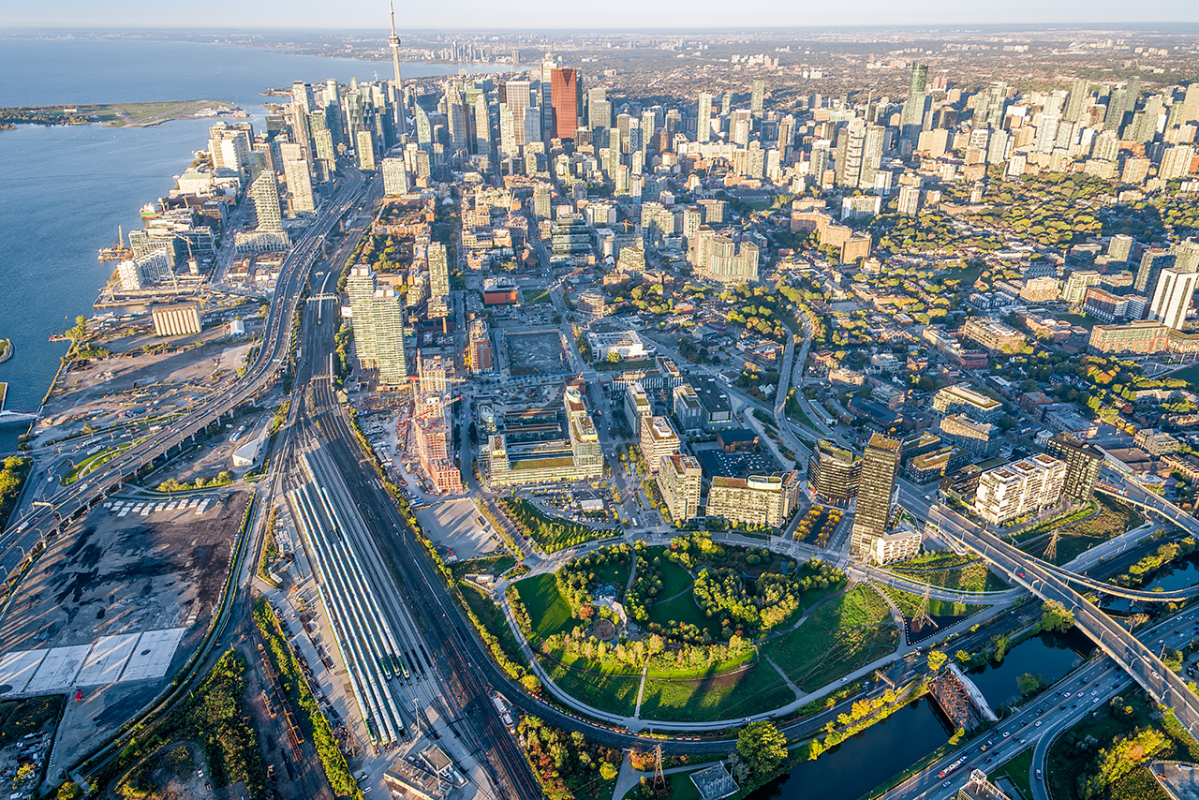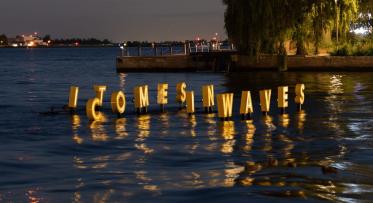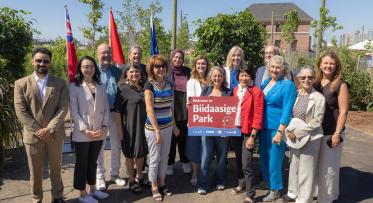Indigenous Public Art is coming to the West Don Lands!
Aerial view of the West Don Lands
POSTED: AUGUST 31, 2021 I PUBLIC ART, PARKS AND PUBLIC SPACES, DESIGN
By: Chloe Catan
We’re planning for two exciting new public art pieces in the West Don Lands, one will be on the triangle of land formed by the intersection of King, Queen and River Streets, and one on the plaza of the future Anishnawbe Health Toronto’s Indigenous Hub on Cherry Street.
Right now, we are in the first stage of commissioning the public art with a Request for Qualifications (RFQ). The RFQ is open to all interested practicing Indigenous artists and Indigenous artist-led teams from across Canada. To learn more about the RFQ, click here.
While installation is still a few years away, these commissions are going to be special for a few reasons.
Indigenous Art in Indigenous Spaces
These sites are on the ancestral territory and crossroads stewarded by the Anishnaabe, the Haudenosaunee, the Huron Wendat and the treaty territory of the Mississaugas of the Credit. The goal is that the new public art will acknowledge and represent the ancestral connections among the many Indigenous communities and Nations the area has supported from time immemorial. The artworks will contribute towards celebrating and acknowledging historical and contemporary Indigenous visual culture as city placemaking.
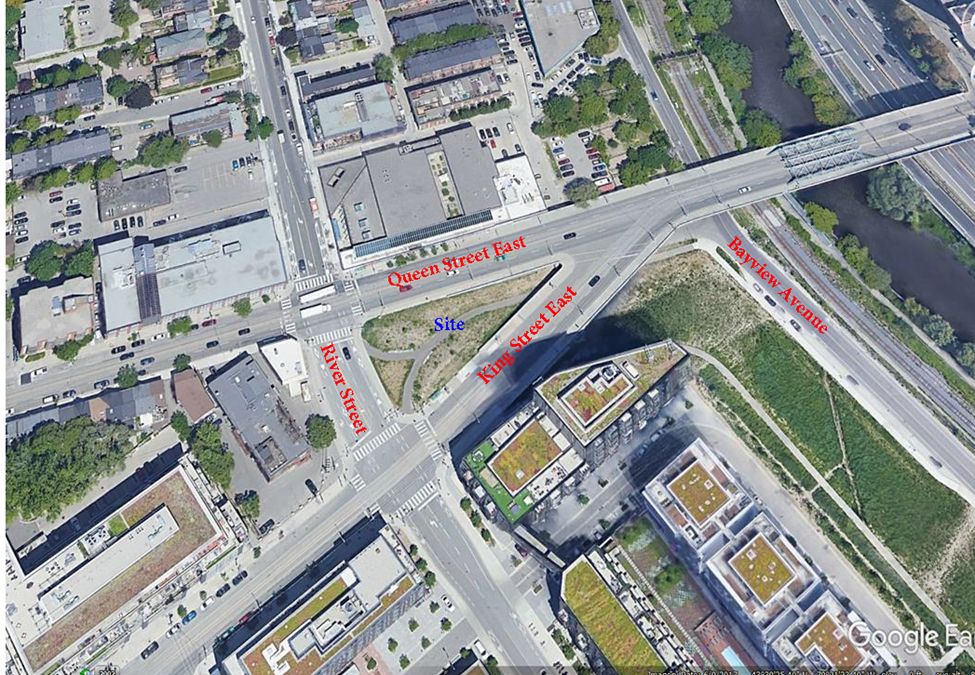
The King, Queen, River Streets Triangle Site
The unique King/Queen/River Streets site is also alongside the route of the Don River and was earmarked for public realm improvements. Part of our vision for this location is to create a welcoming gathering space for nearby communities and the public at large. By adding meaningful artwork and rethinking how the landscape functions as a public space, the triangle will shine as a culturally-significant illumination of (urban) Indigeneity.
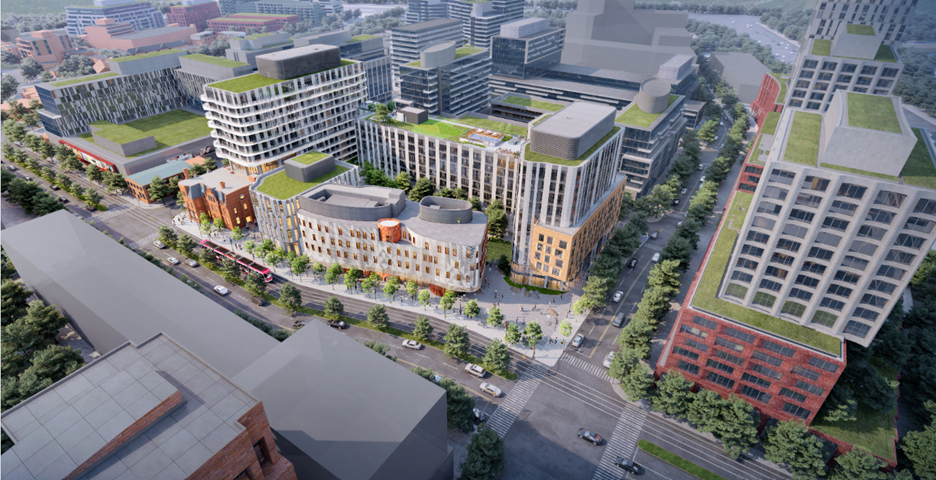
Spanning a city block, the Indigenous Hub is a mixed-use cluster of buildings including the Anishnawbe Health Toronto community health centre, a training centre for Miziwe Biik, and mixed-use condominium and residential rental apartment buildings. Image: Dream/Kilmer
The new Indigenous Hub coming to Cherry Street between Front Street and Mill Street — also part of the former river delta and estuary — is intended to reference the importance of this specific place through its layers of design elements across the entire block. The southwest plaza, the location for the art installation, is envisioned as a cultural gateway to the Indigenous hub from the Distillery District. It will be a multi-functional shared outdoor space that will facilitate and program cultural activities and commerce opportunities. This highly visible location will be a publicly accessible, high foot-traffic area of the Indigenous Hub, ensuring widespread visibility and engagement with the artwork.
Indigenous Curator
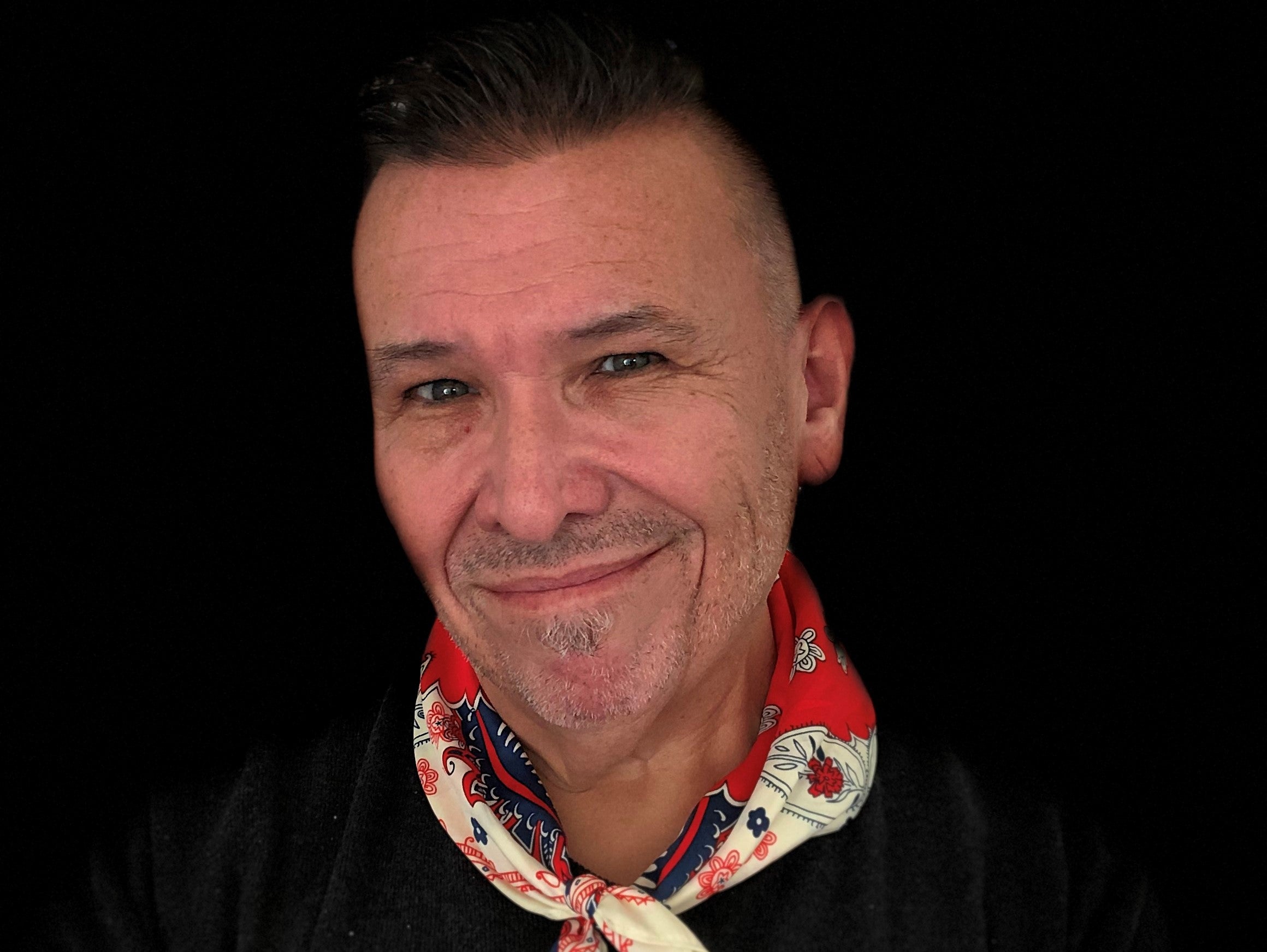
In January 2021 Waterfront Toronto announced the selection of Ryan Rice as our Indigenous Public Art curator following an open call to First Nations, Métis or Inuit curators with strong ties to the Greater Toronto Area (GTA).
We are collaborating with Ryan Rice, Indigenous Public Art Curator, on the commissioning of both artworks. For the King/Queen/River Streets site, an active gateway between the West Don Lands and Corktown, Ryan has been researching the many layers of histories, as well as its relationship to place and community within the urban landscape. This research was supplemented by a public survey intended to provide us with a better understanding of how the community responds to public art, and bring attention specifically to Indigenous public art. Through this engagement we were able to measure the scope of what respondents would like to see in the public realm and expand expectations around what Indigenous public art can be. The results of the survey can be read here.
These commissions highlight the importance of Indigenous placemaking and placekeeping and their role in rekindling relationships to land, not just for Indigenous peoples, but for all the diverse people who call Toronto home. In addition to crafting the curatorial vision, Ryan helped write the artist call, and reviewed procurement processes and best practices to ensure that targeted opportunities for Indigenous artists, such as this one, will be experienced without barriers.
Significant, Permanent, and Site Specific

Some of the existing public art collection in the West Don Lands. From left to right: Lampposts by Tadashi Kawamata, Site Specific by Scott Euson and Marianne Lovink, Garden of Future Follies by Hadley+Maxwell, and The Water Guardians by Jennifer Marman and Daniel Borins with James Khamsi
These two new Indigenous public artworks will join a collection of treasured pieces brought to the community through the West Don Lands Public Art Strategy. Like the rest of the West Don Land’s collection, we’re sure that they will quickly become beloved by visitors and residents alike. The new public art incorporated into an already vibrant neighbourhood will cement the West Don Lands as a thriving cultural urban centre that celebrates inclusivity.
The submission deadline for the RFQ is October 7, 2021.
The selected shortlist will then receive the Request for Proposals, from which an Indigenous artist or an Indigenous artist-led team will be chosen. One step closer to an exciting new addition to the neighbourhood.

